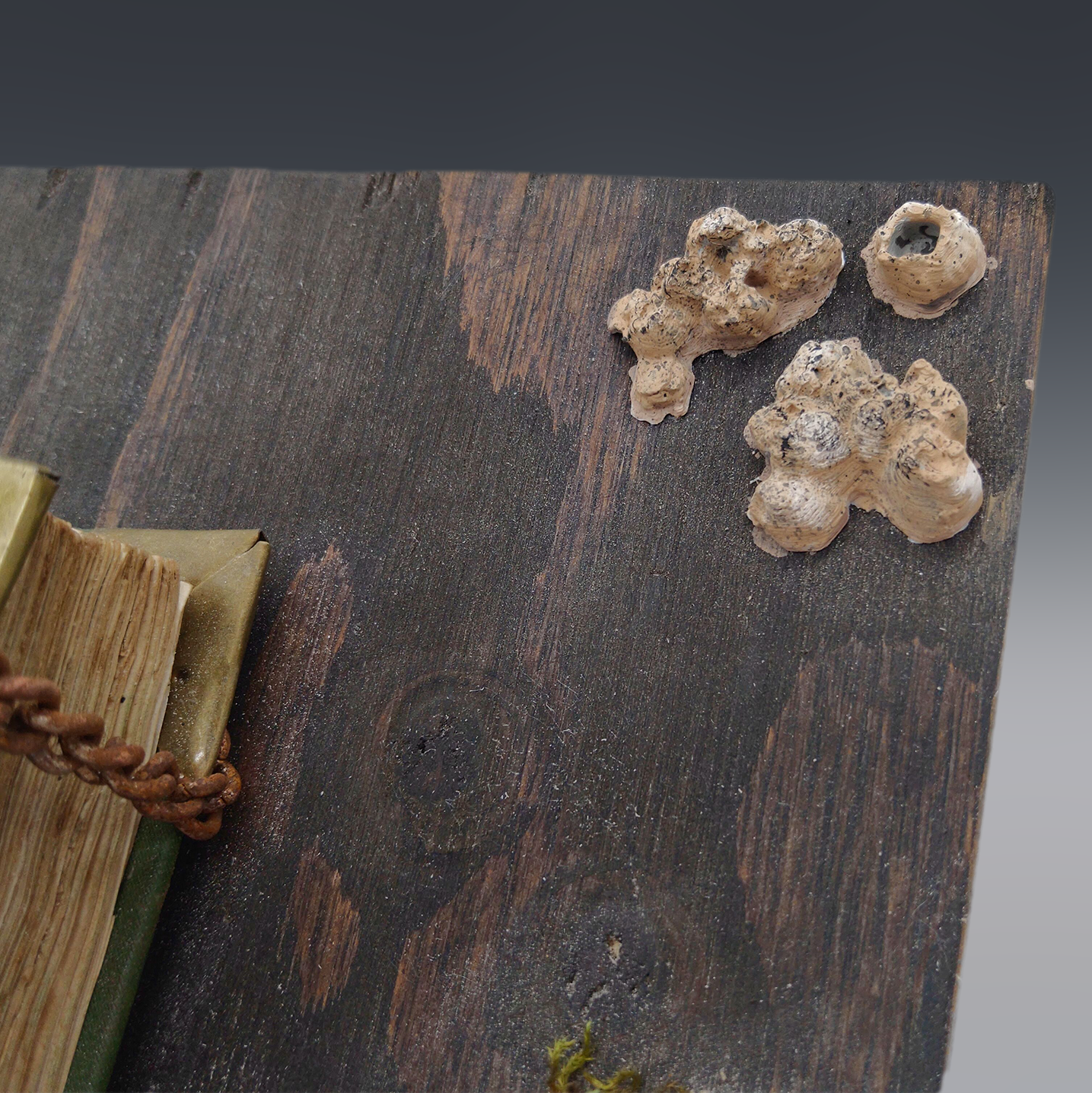The Great Old One known as Cthulhu has yet to be summoned.
Let's take a look on how this was made!
Early concept designs and blueprints.
Maya and ZBrush were used as my creation software, then used 3D Printing to get the pieces printed into the real world. After printing, they were sanded, painted, and pieced together to make sure they fit, with some editing using a Rotary Tool Kit.


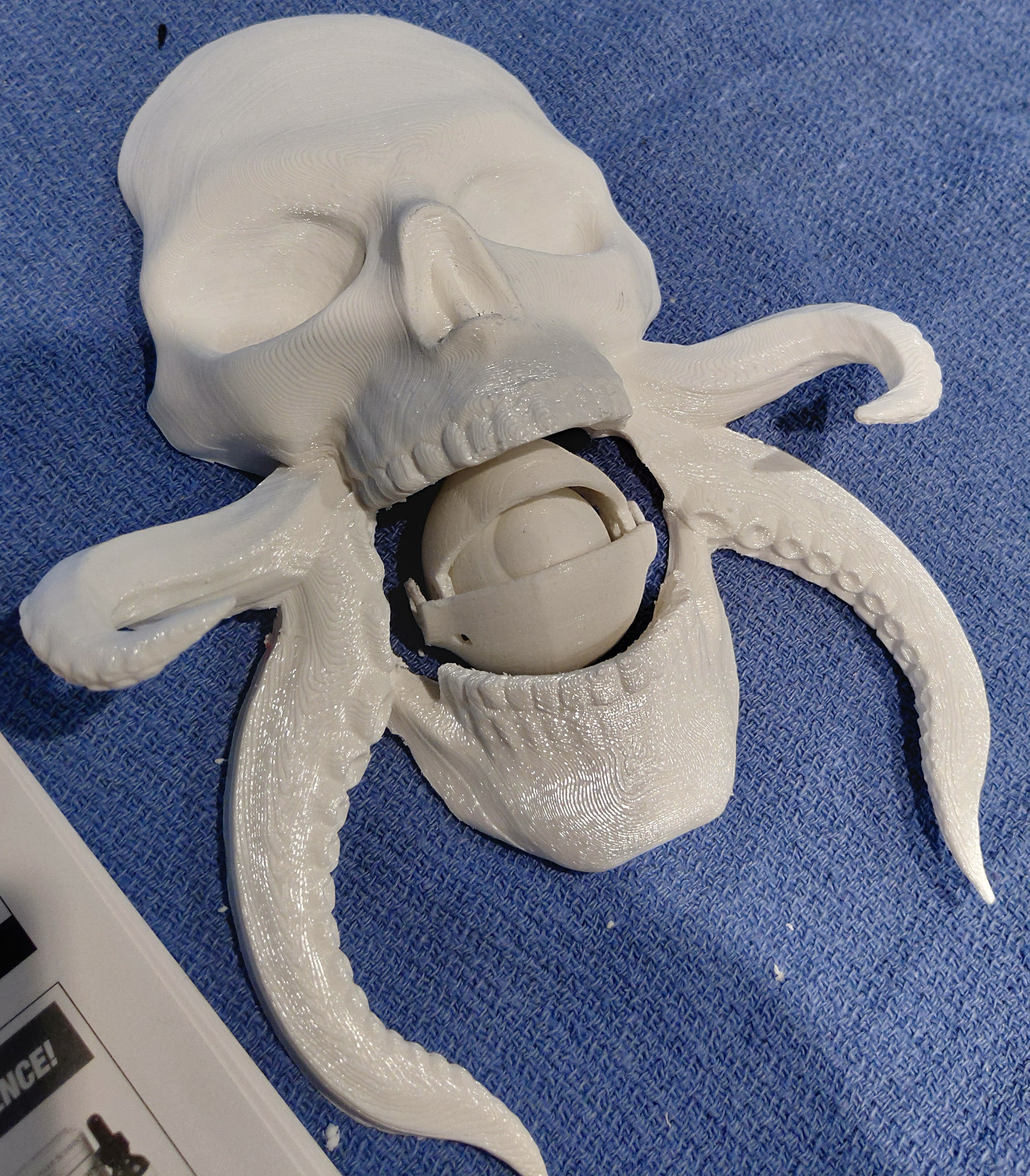

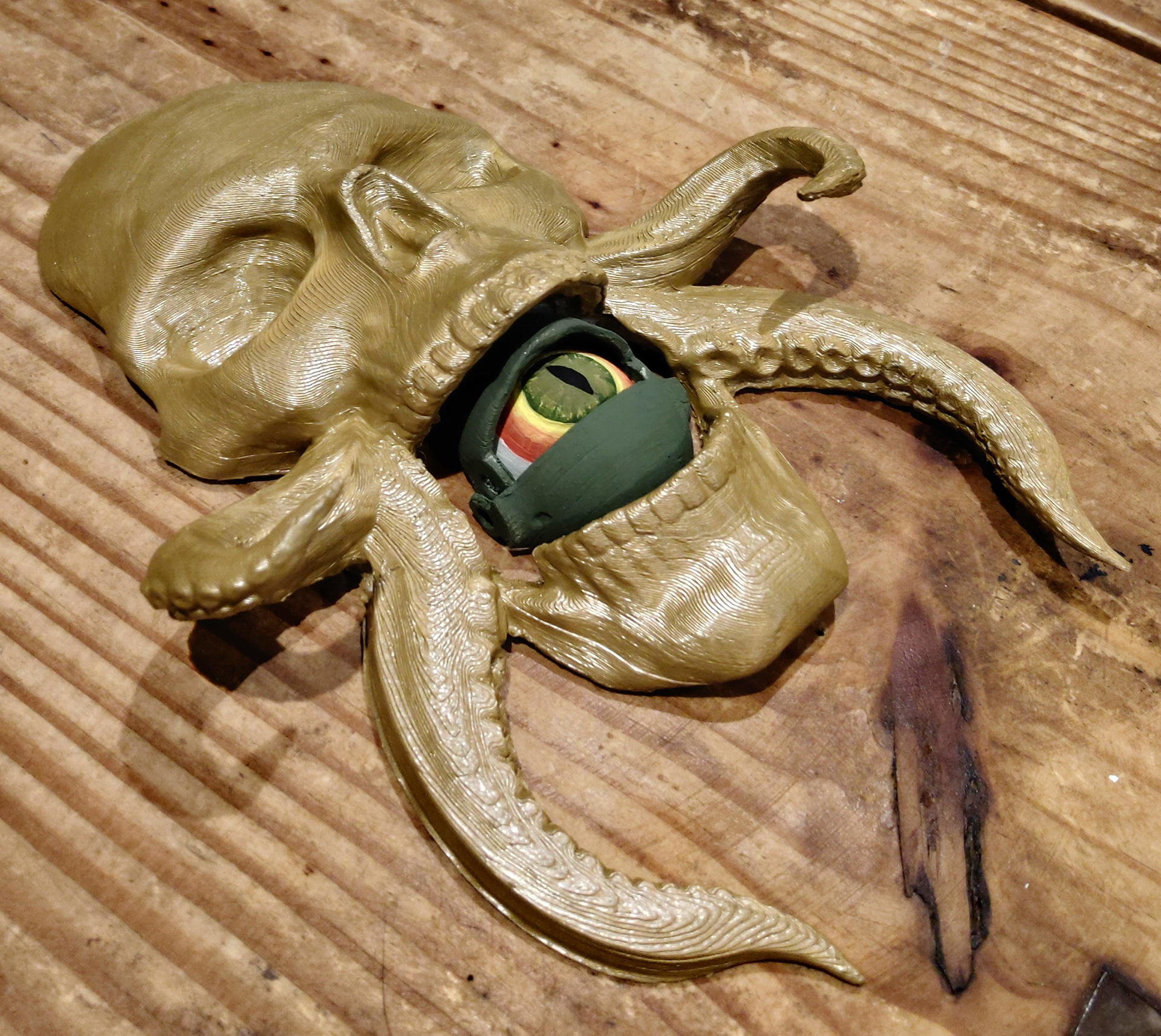
The whole platform runs off code brought into an Arduino Uno Microcontroller using the Arduino software. I set it up to use a joystick, a few buttons, and a potentiometer. The joystick runs the X and Y axis of the eyeball itself, and the button makes the eyelids come together to a certain degree to blink. The potentiometer is used to tweak the eyelid distance if needed.
After I got that movement working and the controls hooked up, I added another button and an LED light to the breadboard so that when I press the button, the LED lights up to let me know it's working. When that happens, it records 5 seconds of movement input using the joystick and eyelid button, then once the LED turns off and my 5 seconds are up, the Arduino automatically plays back what I just saved into the inputs, giving me a self playing and looping animation to run continuously on it's own. For me, this was the most challenging phase. The video below shows the machine running on it's own using this method.
The final step is to create the set design. The pedestal the book sits in is not only used for aesthetics, but to hide and house the electronic components. Some new pieces of wood and metal were purposefully tarnished, aged, and weathered to fit the overall aesthetic of the entire piece.
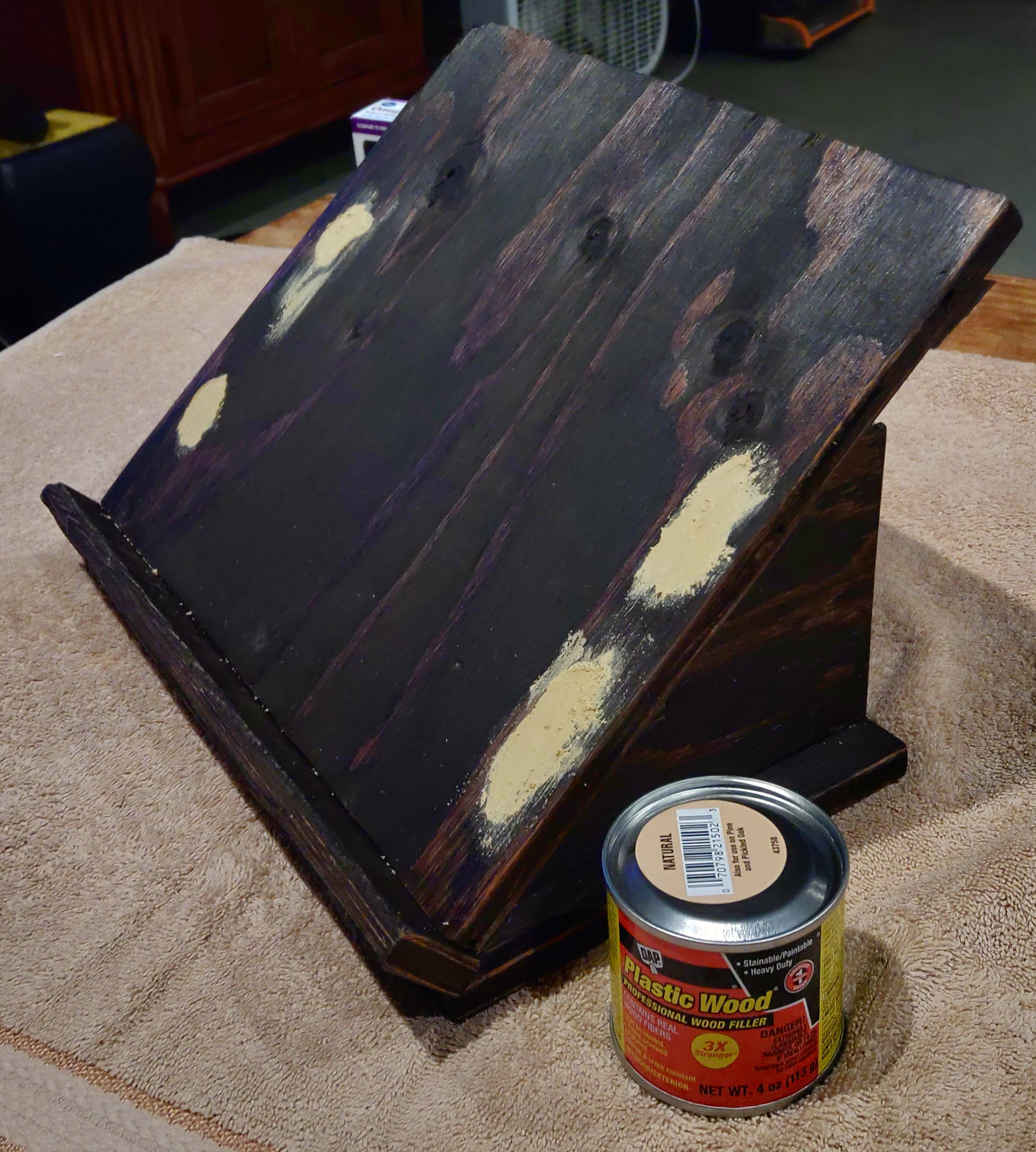


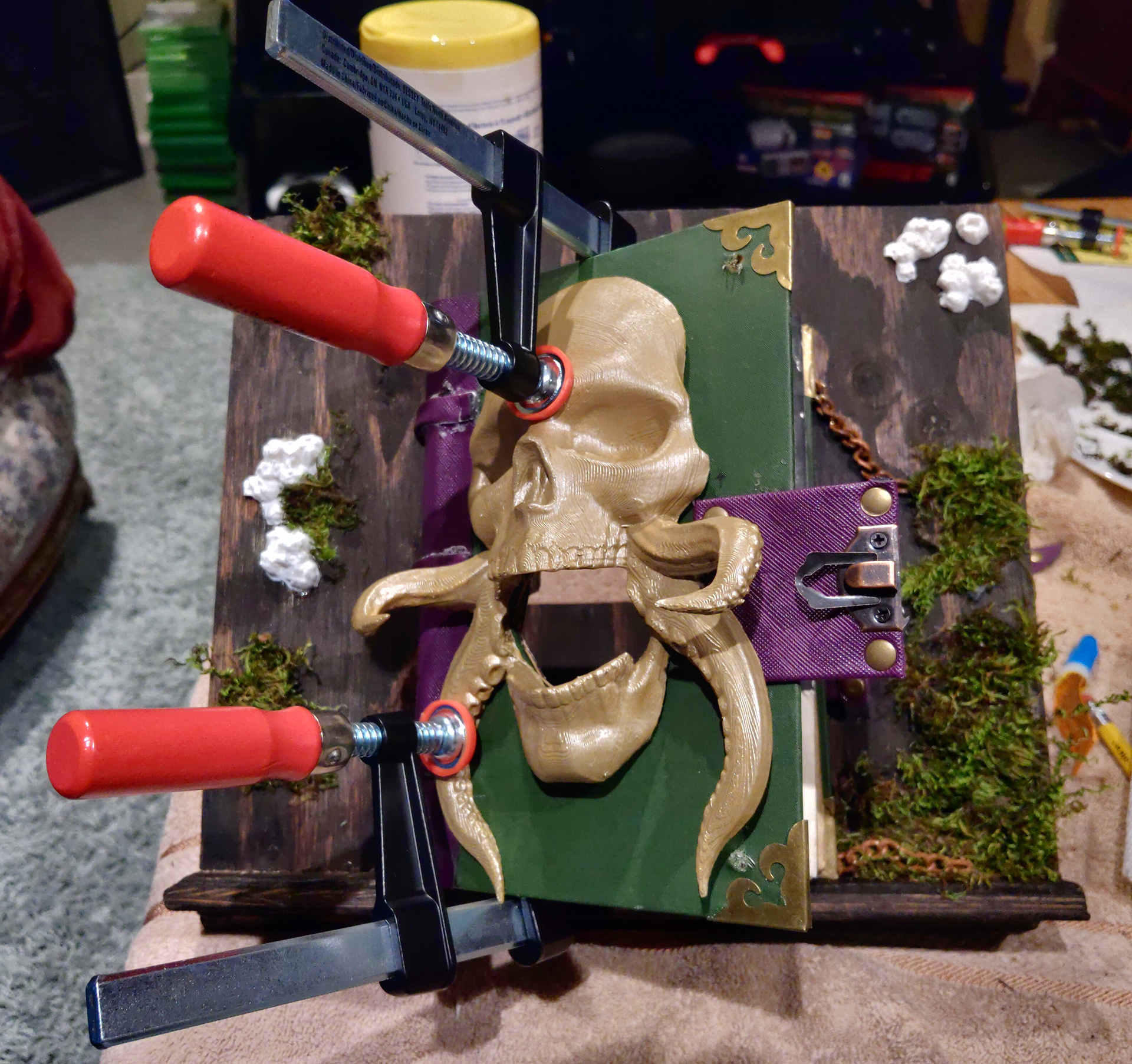

And finally, after many weeks of hard work and much learning and lots of trial and error, the project is complete! This was such a fun project to work on and was a great learning experience on how much work goes into these types of projects. Mine was so small and simple compared to the larger projects out there, but still served as a great first project into the world of robotics.


